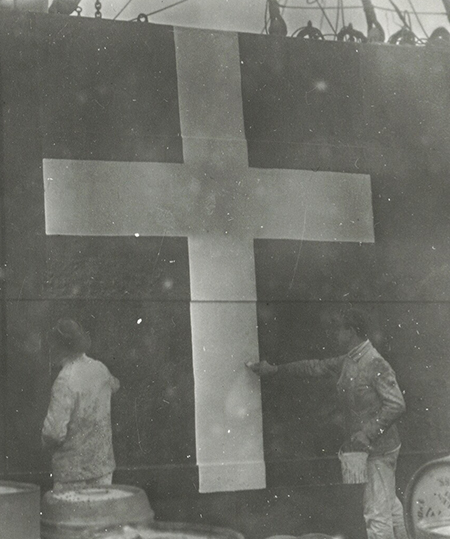Neutrality and the Nordic countries
A tendency towards neutrality during conflicts exists in all the Nordic countries, although Sweden was the only Nordic country that remained (more or less) neutral during the Second World War and the Cold War. Finland has also strived for a policy of neutrality during and after the Cold War. Denmark and Norway have not permitted NATO bases and nuclear weapons on their territories, and Iceland has never maintained military forces of its own. That said, Denmark, Iceland, and Norway were founding members of NATO, there is a NATO base on Greenland, and Denmark has been engaged in several armed conflicts since the Gulf War in 1990.

Sweden is the only Nordic country that was able to remain by and large neutral during the Second World War and pursued a policy of neutrality during the Cold War. The tradition of such a security policy orientation goes back to the first half of the nineteenth century. Nevertheless, elements of neutralist orientations do exist in all the Nordic countries. Rooted in the peripheral geographic position of their territories, such attitudes were fostered by the peace movement and have at one time or another (particularly during the First World War) been part of official foreign policy doctrines. In addition, some Nordic territories have been demilitarised and neutralised by international law, namely the Åland islands (Finland) after the Crimean War in 1856 and the Svalbard archipelago (Norway) in line with the Spitzbergen Treaty of 1920.
Even after the breakdown of the negotiations on a neutralist Scandinavian Defence Alliance in January 1949, neutralist reservations have remained visible in the security policies of Denmark, Iceland, and Norway, all founding members of NATO. Iceland has never maintained military forces and thus does not appear as a full-scale security policy actor. Denmark and Norway have not permitted NATO bases and nuclear weapons on their territories (with the exception of Greenland) and have, in general, pursued a policy of non-provocation toward the Soviet Union. With a substantial segment of the population of these countries sceptical toward NATO, these restrictions have been captured by terms like ‘semi-alignment’ or ‘latent neutrality’. However, at least in the case of Denmark, which after the end of the Cold War repeatedly joined US military efforts and 'coalitions of the willing', the tradition of neutralism is no longer prevalent.
Finland’s Cold War relationship with Russia – neutrality as wishful thinking?
After the consolidation of Finnish sovereignty in the shadow of the Soviet Union in the second half of the 1950s, Finnish politicians claimed to pursue a policy of neutrality. This was problematic in the conventional sense of the term, however. According to the Treaty of Friendship, Cooperation, and Mutual Assistance of 6 April 1948, Finland was obliged to confer with the Soviet Union in the event of a military threat to Finland or the Soviet Union through Finnish territory by Germany or any country aligned with it. Finland was also obliged to defend itself, ‘if necessary, with the assistance of, or jointly with, the Soviet Union’.
Moreover, the Soviet Union only temporarily accepted Finland’s claims for a neutralist orientation. Disbelief in this regard was also implicit in the discussion in the West about Finlandisation (political and societal acquiescence to Soviet imperialism as ascribed to Finland). In contrast to Sweden’s domestic arms industry and philosophy of ‘armed neutrality’, Finnish defence during the Cold War was low-key. The breakdown of the Soviet empire and the cancellation of the friendship treaty by Finland in 1991 could have given substance to claims for neutralist policies. However, as in the case of Sweden, focus on EU membership brought with it a reduced emphasis on the security policy of individual states in the 1990s.
Nordic Balance? Norden as a geopolitical bloc
The focus on neutrality and the historical alignment of these countries have led to the theory of Nordic Balance. This proposes ‘Cold War Norden’ as a geopolitical region with particularly low tension and a self-neutralising status built around a self-enforcing aggregate perspective on the different countries security policy. This also enabled them to take a bridge-building approach to East/West relations during the Cold War era .
Post-neutrality
After the Cold War the concept of neutrality has been absent in political speeches even among the Nordic countries that are not members of NATO. The security environment has become diffuse, while neutrality depends on a clear actual or imagined reference conflict. At the same time, Finland and Sweden have become integrated with the EU, reducing the credibility of their potential neutrality claims. While actual neutrality might be a thing of the past, in both countries the concept has become an element of their national identity. Moves towards formal membership in a military alliance therefore remain risky in the domestic politics of Finland and Sweden.
Further reading:
- H. Lödén, ‘Reaching a Vanishing Point? Reflections on the Future of Neutrality Norms in Sweden and Finland ’, in Cooperation and Conflict 47, 2 (2012) pp.271–284.
- N. Ørvik, ed., Semi-alignment and Western security (London: Croom Helm, 1986).
- T. Forsberg, and T. Vaahtoranta, ‘Inside the EU, outside NATO: Paradoxes of Finland's and Sweden's Post?neutrality’, in European Security 10, 1 (2001) pp.68–93.